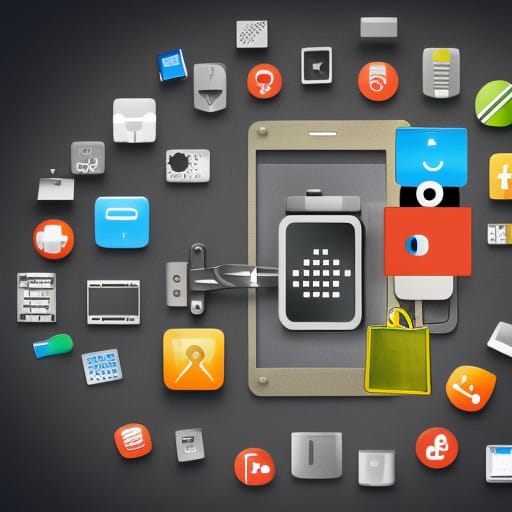Enterprise Asset Management (EAM) is a powerful tool that can help organizations effectively manage their mobile assets such as laptops, tablets, and smartphones to ensure their security and reliability. EAM software solutions can provide real-time tracking and management of mobile assets, helping organizations to optimize asset utilization, reduce costs, and minimize risks. In this article, we will explore how EAM can help organizations manage their mobile assets and why it is essential for security and reliability.
What is EAM?
EAM is a software solution that allows organizations to track and manage their assets, including mobile assets such as laptops, tablets, and smartphones. It provides organizations with a centralized platform that can be used to manage asset lifecycles, optimize asset utilization, and reduce operational costs. EAM solutions can also help organizations comply with regulatory requirements and reduce risks associated with asset management.
Why is EAM essential for managing mobile assets?
Mobile assets such as laptops, tablets, and smartphones are critical to organizations’ operations, and their security and reliability are crucial to maintaining business continuity. EAM is essential for managing mobile assets for the following reasons:
- Real-time asset tracking: EAM solutions provide real-time tracking of mobile assets, enabling organizations to locate and monitor their assets at any time. This feature is essential for organizations with a large number of mobile assets, as it allows them to track the location and status of each asset, ensuring that they are in the right place at the right time.
- Asset lifecycle management: EAM solutions enable organizations to manage the entire lifecycle of their mobile assets, from acquisition to disposal. This feature ensures that assets are maintained, repaired, and upgraded on time, reducing the risk of downtime due to asset failure or obsolescence.
- Compliance management: EAM solutions can help organizations comply with regulatory requirements such as HIPAA, SOX, and GDPR. Compliance management features include tracking and auditing of asset usage, ensuring that assets are secure and up-to-date, and monitoring asset-related activities to identify potential risks.
- Cost optimization: EAM solutions can help organizations optimize their mobile asset usage, reducing operational costs. For example, EAM can help organizations identify underutilized assets, enabling them to be repurposed or disposed of, reducing maintenance costs, and improving the organization’s overall asset management efficiency.
How EAM can help manage mobile assets?
EAM solutions can help manage mobile assets in the following ways:
- Asset tracking: EAM solutions provide real-time tracking of mobile assets, enabling organizations to monitor their location, usage, and status. This feature is essential for asset management and can help organizations ensure that their mobile assets are in the right place at the right time.
- Asset lifecycle management: EAM solutions enable organizations to manage the entire lifecycle of their mobile assets, from acquisition to disposal. This feature ensures that assets are maintained, repaired, and upgraded on time, reducing the risk of downtime due to asset failure or obsolescence.
- Maintenance management: EAM solutions can help organizations manage their mobile asset maintenance, ensuring that assets are serviced and repaired on time. This feature can help prevent asset failure, reducing downtime and ensuring that mobile assets are always available when needed.
- Security management: EAM solutions can help organizations ensure that their mobile assets are secure, reducing the risk of data breaches and cyberattacks. Security management features include asset tracking, auditing of asset usage, and monitoring of asset-related activities to identify potential risks.
- Compliance management: EAM solutions can help organizations comply with regulatory requirements such as HIPAA, SOX, and GDPR. Compliance management features include tracking and auditing of asset usage, ensuring that assets are secure and up-to-date, and monitoring asset-related activities to identify potential risks.
- Analytics and reporting: EAM solutions provide analytics and reporting capabilities that enable organizations to analyze data related to their mobile assets, such as usage patterns, maintenance costs, and asset lifecycles. This information can help organizations make informed decisions about their mobile asset management, enabling them to optimize their asset utilization, reduce costs, and improve efficiency.
- Mobile device management: EAM solutions can help organizations manage their mobile devices, such as laptops, tablets, and smartphones. This feature includes remote device management, software distribution, and security management, ensuring that mobile devices are secure and up-to-date.
- Integration with other systems: EAM solutions can be integrated with other systems such as ERP and CRM, enabling organizations to have a centralized view of their mobile asset management. Integration with other systems can help organizations streamline their processes, reduce manual errors, and improve overall efficiency.
The benefits of using EAM to manage mobile assets
The benefits of using EAM to manage mobile assets are numerous, including:
- Improved asset visibility: EAM solutions provide real-time tracking of mobile assets, enabling organizations to monitor their location, usage, and status. This feature provides improved asset visibility, ensuring that assets are in the right place at the right time.
- Increased asset lifespan: EAM solutions enable organizations to manage the entire lifecycle of their mobile assets, from acquisition to disposal. This feature ensures that assets are maintained, repaired, and upgraded on time, increasing their lifespan.
- Reduced operational costs: EAM solutions can help organizations optimize their mobile asset usage, reducing operational costs. For example, EAM can help organizations identify underutilized assets, enabling them to be repurposed or disposed of, reducing maintenance costs, and improving the organization’s overall asset management efficiency.
- Improved security: EAM solutions can help organizations ensure that their mobile assets are secure, reducing the risk of data breaches and cyberattacks. Security management features include asset tracking, auditing of asset usage, and monitoring of asset-related activities to identify potential risks.
- Compliance management: EAM solutions can help organizations comply with regulatory requirements such as HIPAA, SOX, and GDPR. Compliance management features include tracking and auditing of asset usage, ensuring that assets are secure and up-to-date, and monitoring asset-related activities to identify potential risks.
- Better decision-making: EAM solutions provide analytics and reporting capabilities that enable organizations to analyze data related to their mobile assets. This information can help organizations make informed decisions about their mobile asset management, enabling them to optimize their asset utilization, reduce costs, and improve efficiency.
Conclusion
Mobile assets such as laptops, tablets, and smartphones are essential to organizations’ operations, and their security and reliability are crucial to maintaining business continuity. EAM solutions can help organizations effectively manage their mobile assets, providing real-time tracking, lifecycle management, maintenance management, security management, compliance management, analytics and reporting, mobile device management, and integration with other systems. The benefits of using EAM to manage mobile assets include improved asset visibility, increased asset lifespan, reduced operational costs, improved security, compliance management, and better decision-making. In today’s increasingly mobile world, EAM is a powerful tool that can help organizations ensure the security and reliability of their mobile assets.


